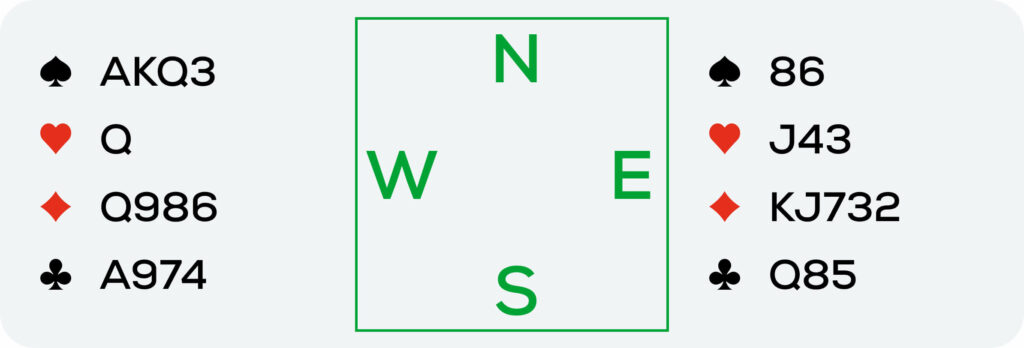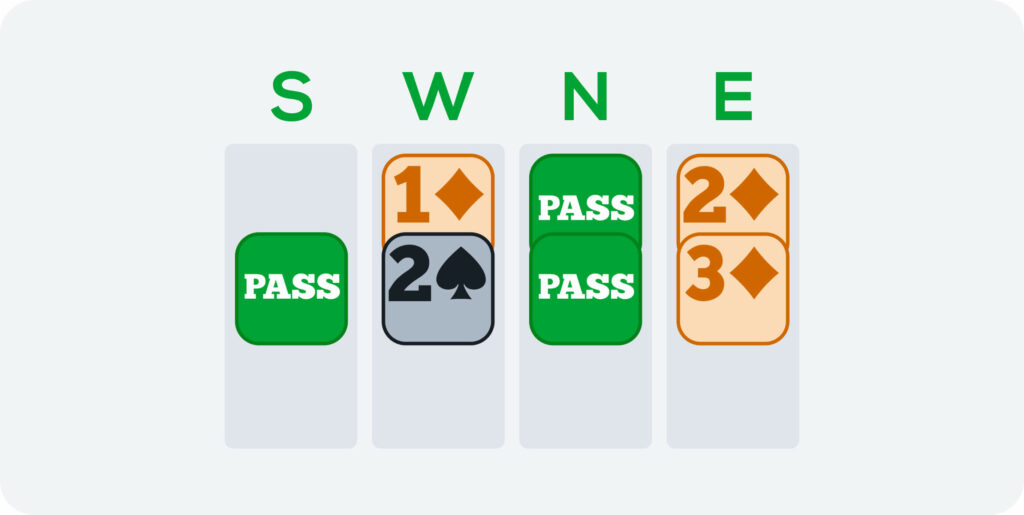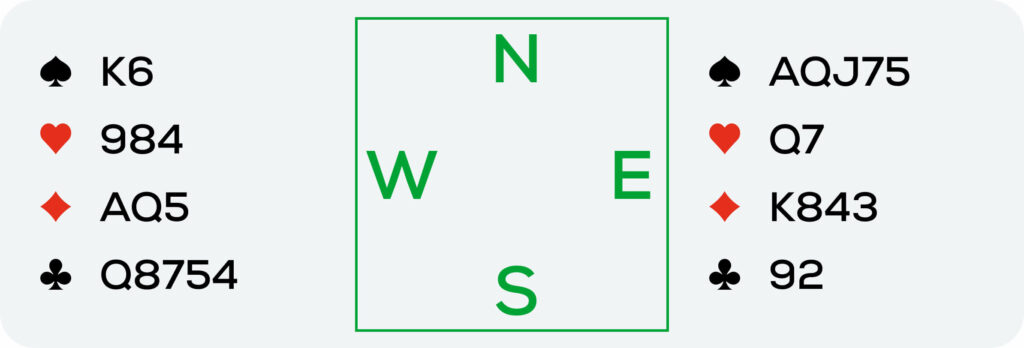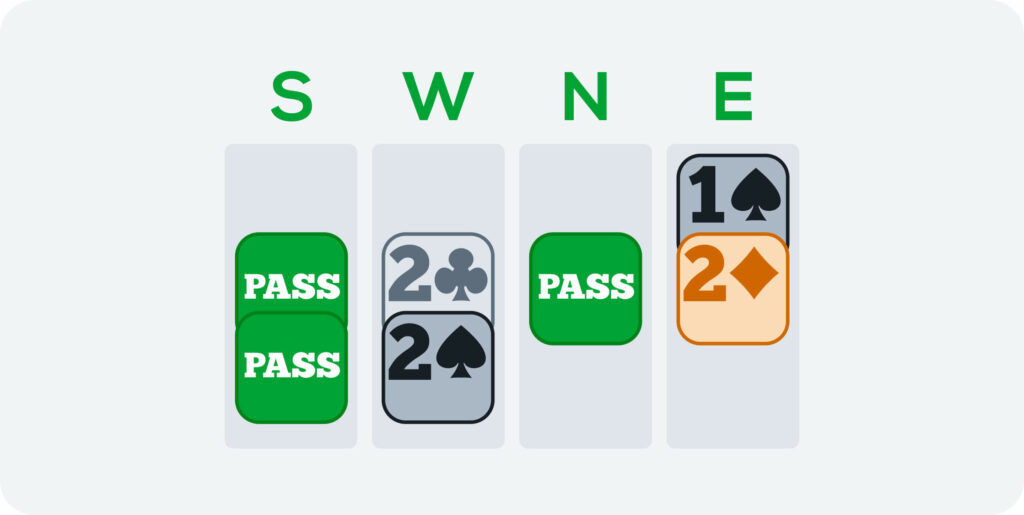
The correct part-score

In tournaments, it’s very common for a side to bid but not have enough points to reach game. In this case, it’s important to look for the best part-score contract: the one that earns the most points, or sometimes just the one with the best chance of making! For that, there are a myriad of simple and tasty sequences. However, some sequences can be a bit elaborate from time to time to find the optimal contract. We will look at some of them:
Deal 1
Dealer West.


East choses to make a simple raise in the minor, showing five cards and 6-10HL (HL: HCP plus points for length). West has a nice hand with 16 HCP and invites game, all while describing his hand on the way – namely his four Spades. But East is fundamentally weak and refuses by returning to the minor at the three level: final contract!
Deal 2
Dealer East.


Looking at 11 HCP, West bids Clubs as a new suit at the two-level. This bid is autoforcing, but not game forcing. Thus, over East’s economical two-suiter he must step on the brakes on the next round – he would bid 2NT with a semblance of a Heart stopper. Here, with two Spades and nothing even close to a Heart stopper, it’s preferable to bid 2♠, which is a simple preference, non-forcing and with 11 HCP. East uses this to happily pass.
You need a Funbridge Premium or Premium+ subscription to keep reading.
Do you want to read 4 more bidding analysis by Nicolas Lhuissier? Connect with a Funbridge Premium or Premium+ account.



